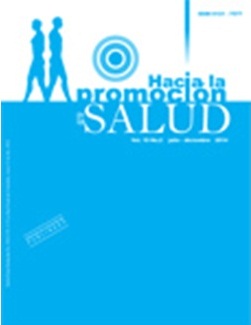Authors
Abstract
Objective: To assess the spatial and statistical relationships between commercial land uses and pedestrian injury collisions in Ciudad Juárez. Method: Cross sectional study using data from the Municipal Transit Police from 2008 to 2011. Increased risk intersections are identified by spatial analysis. A socio-economic database and Spearman correlation were constructed to know the relationship between the variables: ran over and concentration of productive activities. Results: Eight traffic analysis zones were obtained. The results indicate that there is more risk of being hit where there is a higher density of employment in services and shops, as well as for over 60 years old people. Conclusions: There is a high risk of collisions in areas with high intra- urban hierarchy associated with land uses with a vocation to shops and services. The density of collisions is higher along major urban roads.
References
Peden M, Scurfield R, Sleet D, Mohan D, Hyder AA, Jarawan E, Mathers C, editores. Informe mundial sobre prevención de los traumatismos causados por el tránsito. Ginebra: Organización Mundial de la Salud; 2004.
OPS. Informe sobre el Estado de la Seguridad Vial en la Región de la Américas. Washington, D.C.: Organización Panamericana de la Salud; 2009.
Hijar M, Carrillo C, Flores M, Anaya R, López V. Risk factors in highway traffic accidents: A case control study. Accident Analysis and Prevention. 2000; 32:703-709.
Hijar M, Chu LD, Kraus JF. Cross-national comparison of injury mortality: Los Angeles County, California and Mexico City, Mexico. International Epidemiological Association. 2000; 29:715-721.
Hijar M, Kraus JFT, Tovar V, Carrillo C. Analysis of fatal pedestrian injuries in Mexico City, 1994-1997. Injury. 2001; 32:279-284.
Hijar M, Trostle J, Bronfman M. Pedestrian injures in Mexico: A multi-method approach. Accident Analysis and Prevention. 2003; 37(1):125-135.
Hijar M, Vázquez-Vela E, Arreola-Risa C. Pedestrian traffic injuries in Mexico: A country update. International Journal of Injury Control and Safety Promotion. 2003; 10:37-43.
Fuentes C, Hernández V. La Estructura Espacial Urbana y la Incidencia de Accidentes de Tránsito en Tijuana, B.C. (2003-2004). Frontera Norte. 2009; 21:1591-1607.
Fuentes C, Hernández V. Spatial environmental risk factors for pedestrian injury collisions in Ciudad Juárez, Mexico (2008-2009): implications for urban planning. International Journal of Injury Control and Safety Promotion. 2013; 20(2):169-178.
Gouvea VB, Sampedro A. Efecto de los elementos de la infraestructura viaria sobre la seguridad de la circulación; 2005 [acceso 4 de junio de 2014]. Disponible en: http://aquarius.ime.eb.br/~webde2/prof/vania/pubs/(1).pdf
Licnerski JR. Las grandes intervenciones urbanas como espacio de Centralidad. I Congreso de Urbanismo y Ordenación del Territorio, Colegio de Ingenieros de Caminos, canales y puertos; 2008 [acceso 2 de junio de 2014]. Disponible en: http://www.ciccp.es/biblio_digital/Urbanismo_I/congreso/pdf/050102.pdf
Hernández V. Gestión integral de los desastres. La percepción del riesgo en el tránsito como una de las causas de los accidentes. Tijuana: Colegio de la Frontera Norte; 2007.
Fuentes CM. La Forma Urbana y la Incidencia de Atropellamientos. En: Hernández V, coordinador. Geografía del Riesgo Vial. Siniestros de Tránsito en Ciudad Juárez. México: Universidad Autónoma de Ciudad Juárez; 2012. p.73-95.
ERSO: European Road Safety Observatory [Internet]. European Commission: ERSO; [acceso 18 de mayo de 2014]. Novice Driver. Disponible en http://www.erso.eu/knowledge/Fixed/06_young/novice%20drivers.pdf
Clark DD, Ward P, Bartle C, Truman W. Young driver accidents in UK: the influence of age, experience, and time of day. Accident Analysis and Prevention. 2006; 38(5):871-878.
Instituto Municipal de Investigación y Planeación. Plan de Desarrollo Urbano, 2009. Ciudad Juárez: Ayuntamiento de Juárez; 2009.
Fuentes CM. La estructura urbana y las diferencias espaciales en los tiempos de traslado del viaje al trabajo en Ciudad Juárez, Chihuahua. Estudios Demográficos y Urbanos. 2008; 23(1):55-81.
Observatorio de seguridad y convivencia ciudadanas del municipio de Juárez, Chihuahua. Boletín No. 4. Ciudad Juárez; 2010.
Graham DJ, Glaister S. Spatial variation in road pedestrian casualties: The role of urban scale, density and land-use mix. Urban Studies. 2003; 40(8):1591-1607.
Loukaitou Anastasia-Sideris. Is it Safe to Walk? Neighborhood Safety and Security Considerations and Their Effects on Walking. Journal of Planning Literature. 2006; 20:219-232.
Dargay J, Dermot G, Martin S. Vehicle ownership and income growth, worldwide: 1960-2030. Energy Journal. 2007; 28(4).
Daniel, W. Bioestadística. México: Editorial Limusa; 1999.
Noland RB, Mohammed AQ. A spatially disaggregate analysis of road causalities in England. Accident Analysis and Prevention. 2004; 36(6):973-984.
Cheng W, Simon PW. Experimental evaluation of hotspot identification methods. Accident Analysis and Prevention. 2005; 37(5):870-881.
Aguero-Valverde J, Jovanis PP. Spatial analysis of fatal and injury crashes in Pennsylvania. Accident Analysis and Prevention. 2006; 38(3):618-625.
Lo BPY. Validating crash locations for quantitative spatial analysis: a GIS-based approach. Accident Analysis and Prevention. 2006; 38(5):879-886.
Miranda-Moreno LF, Morency P, El-Geneidy AM. The link between built environment, pedestrian activity and pedestrian-vehicle collision occurrence at signalized intersections. Accident Analysis and Prevention. 2011; 43(5):1624-1634.
Ukkusuri S, Miranda-Moreno LF, Ramadurai G, Isa-Tavarez J. The role of built environment crash frequency. Safety Science, 2012; 50(4):1141-1151.
Koh PP, Wong YD, Chandrasekar P. Safety evaluation of pedestrian behavior and violations at signalized pedestrian crossing. Safety Science. 2014; 70:143-152.
Clifton KJ, Burnier CV, Akar G. Severity of injury from pedestrian-vehicle crashes: What can we learn from examining the built environment? Transportation Research Part D: Transport and Environment. 2009; 14(6):425-436.


 PDF (Español)
PDF (Español)
 FLIP
FLIP






















